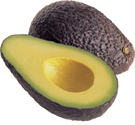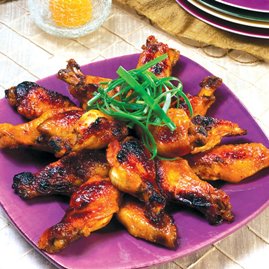The Cuisine of India
A lesson plan.
By Mary Petersen and Ronald S. Wolf, CCC, CCE
This lesson plan focuses on the history of and cultural influences on Indian cuisine, the topography and climate that affect food production and preparation, key ingredients and foods, cooking methods and common equipment, a focus on culinary regions, and dietary restrictions as dictated by various religions, among other aspects. A handout as an MS Word document is available for download and copying.

 Shirley P. Rauh, FACS chair at Lutheran High School South in St. Louis, submitted the following Lesson Plan as a “teaching tip” entry in the 2007 CAFÉ Scholarship program that awarded four winners grants toward registration at a CAFÉ workshop or the Leadership Conference this summer.
Shirley P. Rauh, FACS chair at Lutheran High School South in St. Louis, submitted the following Lesson Plan as a “teaching tip” entry in the 2007 CAFÉ Scholarship program that awarded four winners grants toward registration at a CAFÉ workshop or the Leadership Conference this summer.  This comprehensive lesson plan provides a basic understanding of American lamb, with a particular focus on the leg, from farm to plate. Topics include product acquisition, leg cuts and fabrication, safe handling and sanitation, best applied cooking techniques and methods, nutrition, and ideal flavors to marry with American lamb, as well as discussion questions.
This comprehensive lesson plan provides a basic understanding of American lamb, with a particular focus on the leg, from farm to plate. Topics include product acquisition, leg cuts and fabrication, safe handling and sanitation, best applied cooking techniques and methods, nutrition, and ideal flavors to marry with American lamb, as well as discussion questions.  Presented by Avocados from Mexico
Presented by Avocados from Mexico Contrary to popular belief, the mango is available any time of year, and the Orlando, Fla.-based National Mango Board (NMB) has made it its mission to educate U.S. consumers on selection and preparation of the world’s most consumed fruit. Since 1995, mango consumption has increased by 100% in the United States (U.S. Outlook Report 2004). Approximately only 30% of U.S. households consume mangos today, however.
Contrary to popular belief, the mango is available any time of year, and the Orlando, Fla.-based National Mango Board (NMB) has made it its mission to educate U.S. consumers on selection and preparation of the world’s most consumed fruit. Since 1995, mango consumption has increased by 100% in the United States (U.S. Outlook Report 2004). Approximately only 30% of U.S. households consume mangos today, however. For economic reasons, there are very few kitchens in the country that cook almost everything from scratch. Mixes, precooked items, packages and containers can be found in even the best kitchens. The problem with many young cooks is that they just open up the packages and cans, dump them into a pot or hotel pan, heat them, and slop them on a plate. They lose the passion for their craft. They become disillusioned and bitter, hating and then quitting their jobs.
For economic reasons, there are very few kitchens in the country that cook almost everything from scratch. Mixes, precooked items, packages and containers can be found in even the best kitchens. The problem with many young cooks is that they just open up the packages and cans, dump them into a pot or hotel pan, heat them, and slop them on a plate. They lose the passion for their craft. They become disillusioned and bitter, hating and then quitting their jobs.